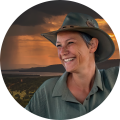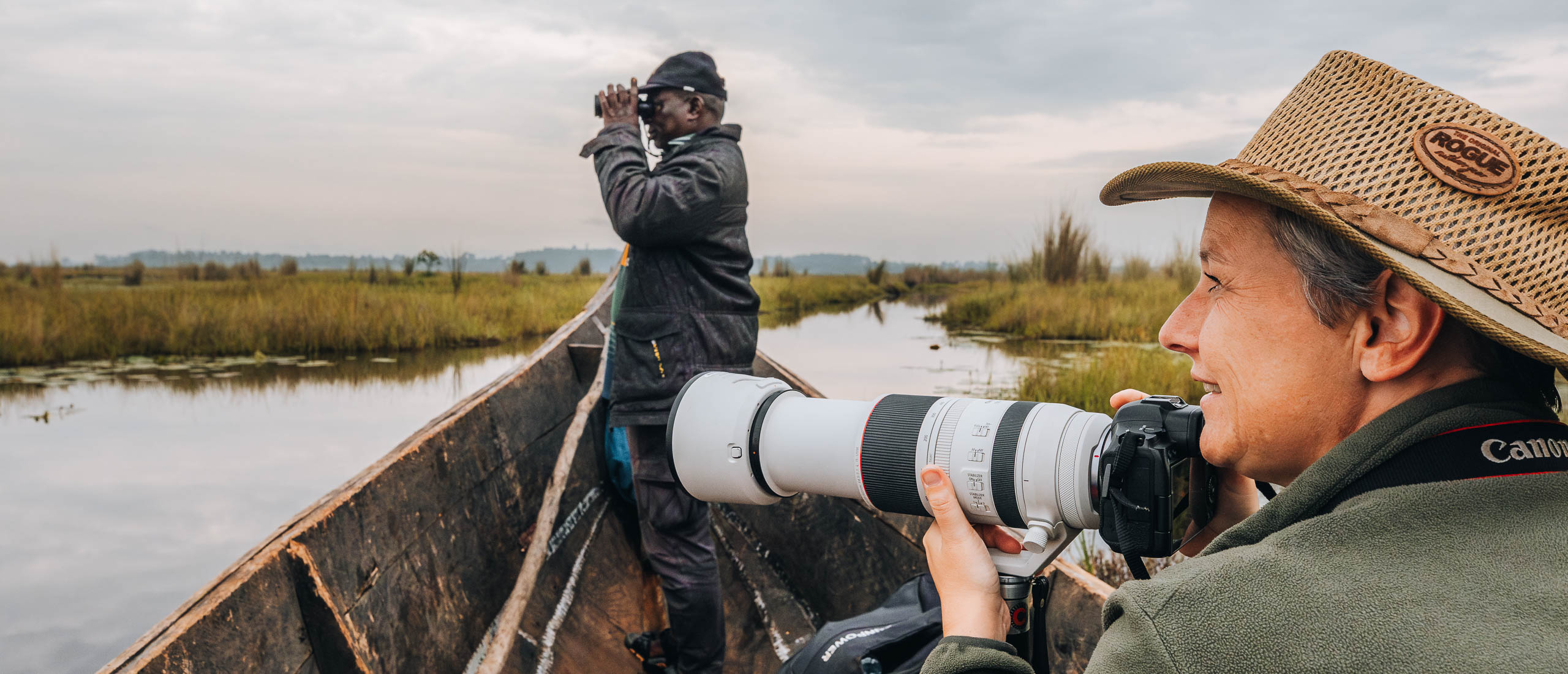
Canon R5 and 100-500mm RF Lens: My Ultimate Safari Photography Experience in Uganda
As a travel photographer and safari enthusiast, I am always looking for the perfect camera gear to capture wildlife and landscapes. If you’re wondering about the best wildlife photography camera for Africa, the Canon R5 is a top contender, especially when paired with the RF 100-500mm lens. During my recent trip to Uganda, I had the chance to extensively test the Canon R5 combined with the RF 100-500mm f/4.5-7.1 L IS USM lens.

From impressive mountain gorillas and chimpanzees in the rainforests to elephants, giraffes, the elusive shoebill, breathtaking landscapes, and cultural experiences, this setup did not disappoint. However, I had a slight learning curve with the R5, especially when shooting in low-light conditions, which is common when photographing gorillas in dense forests.
In this blog, I share my experiences and insights about this camera and lens, including the best camera settings for safari photography in Uganda.
First Impressions of the Canon R5
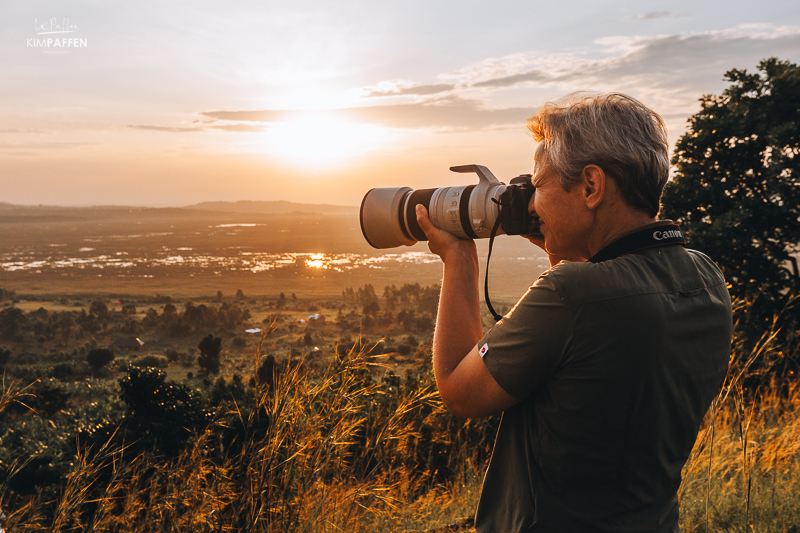
The EOS Canon R5 is known for its advanced features, including animal eye detection and incredibly fast autofocus. For those curious about Canon R5 safari photography settings, I found that using Animal Eye Detection and a fast shutter speed (1/1000s, 1/2000s, or higher) worked best for capturing fast-moving wildlife. These features are a game-changer when photographing wildlife, especially fast-moving animals like chimpanzees in dense rainforests or birds in flight. If you’re debating between the Canon R5 vs 5D Mark IV for wildlife photography, the R5’s animal eye detection and higher resolution give it a clear edge for African safaris.

At first, I had to get used to the autofocus settings. The animal detection generally works brilliantly, but in dense jungle environments, the camera sometimes struggled to differentiate between an animal and a branch or leaf. For example, when tracking an animal in dark conditions, the autofocus would occasionally shift to a tree trunk or branch if the animal jumped from one branch to another. This could be frustrating, especially when photographing fast-moving subjects like chimpanzees. monkeys or birds. Because of this, I occasionally had to manually focus or switch to my trusted Canon 5D Mark IV with the EF 100-400mm f/4.5-5.6L IS II USM.
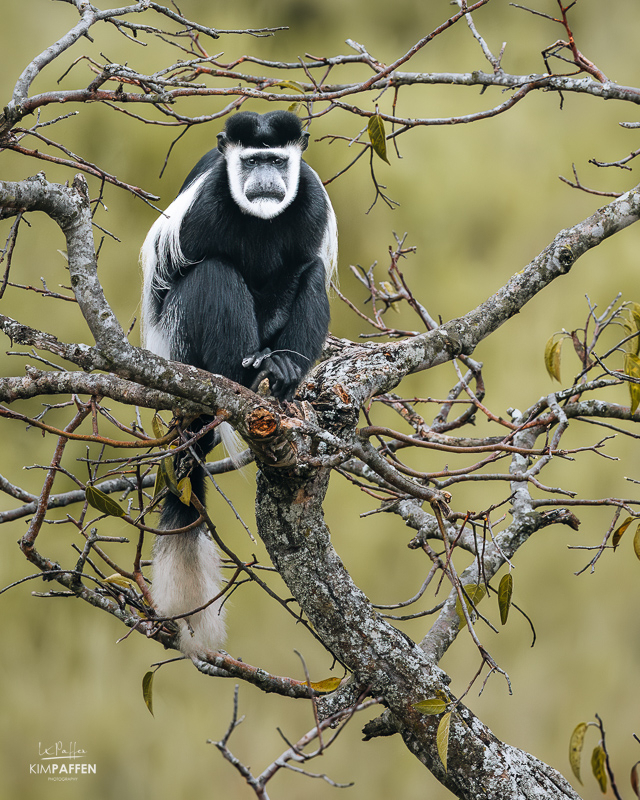
However, I quickly realized that the R5 was becoming my favorite, mainly due to its lighter weight, speed, and flexibility. I’ve also heard that the new Canon R5 Mark II has received an upgrade where you can configure the autofocus to prioritize detecting an animal’s face. This means that if the camera temporarily loses sight of the animal, it won’t focus on a random object like a branch or trunk but it will keep looking for a face when the animal comes back into view. This improvement could be a game-changer for wildlife photographers, especially in challenging environments like Uganda’s dense rainforests.
The 100-500mm RF Lens: Extra Reach and Versatility
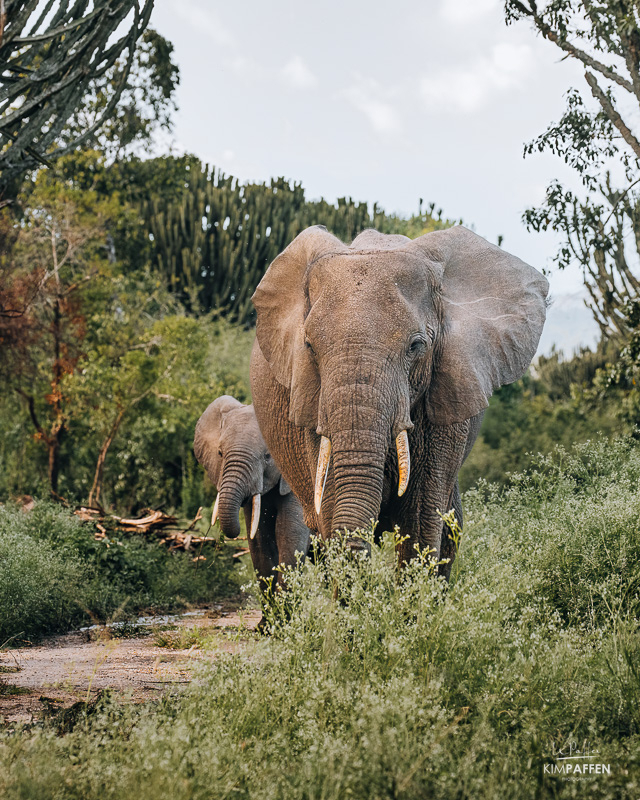
The Canon RF 100-500mm lens was an excellent addition to my kit. If you’re looking for the best lenses for Canon R5 safari photography, the RF 100-500mm is a versatile option, offering exceptional sharpness and reach for distant subjects like elephants and lions. The extra 100mm zoom compared to my 100-400mm lens gave me that little extra reach to capture distant subjects, such as giraffes grazing on the savanna or birds perched high in the trees. Below are a few bird images captured at 500mm zoom:
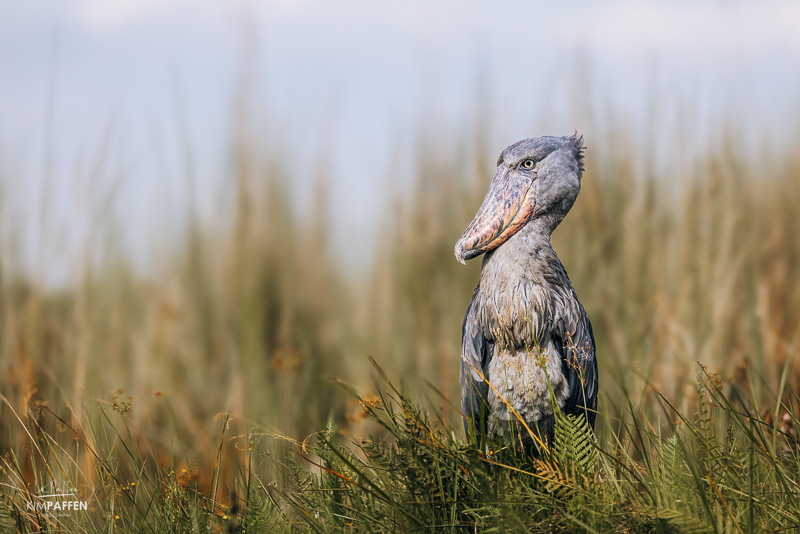
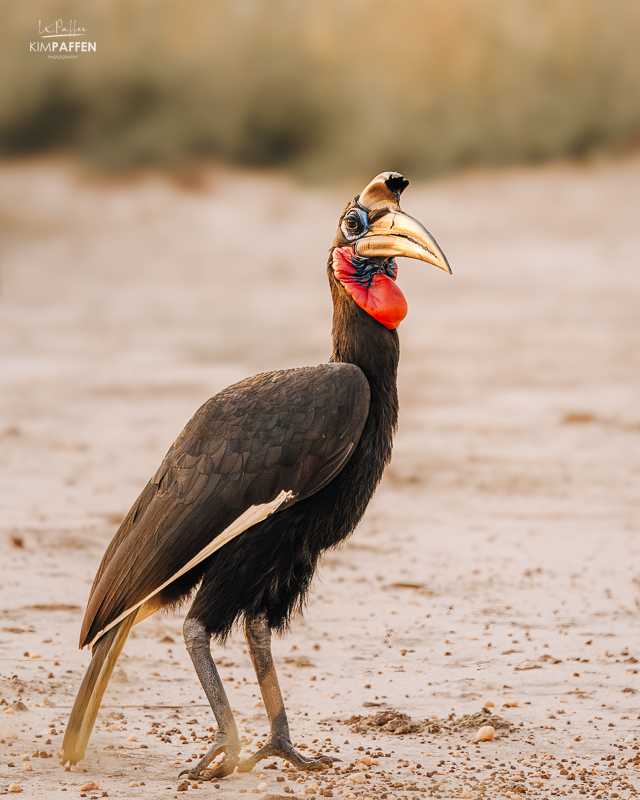
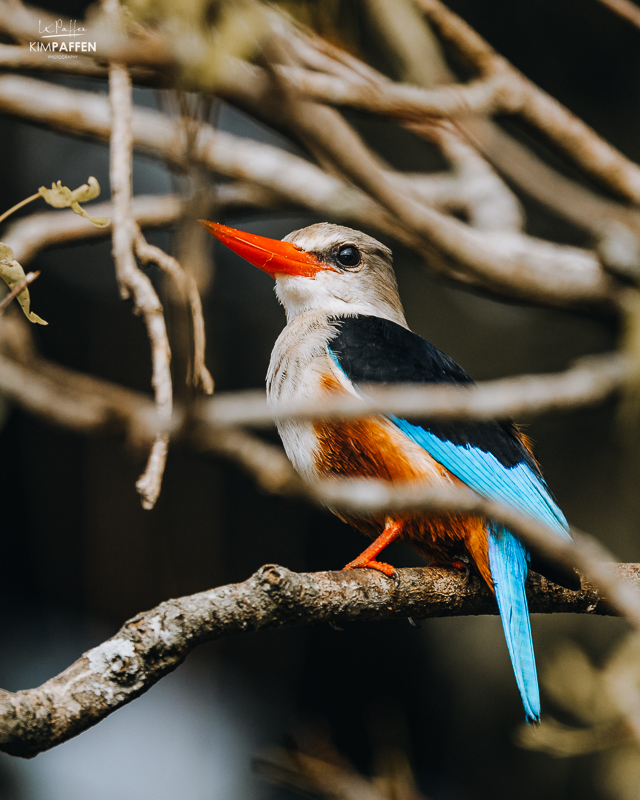
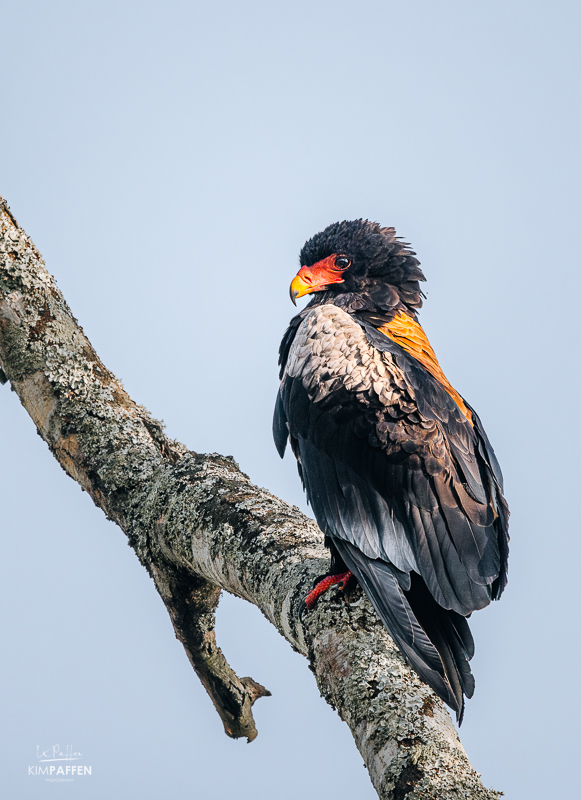
If you’re looking for a detailed RF 100-500mm lens review for bird photography, I can confidently say this lens delivers exceptional sharpness and versatility, even at 500mm. The image stabilization combined with the R5 ensured I could shoot sharp images handheld, which is crucial when capturing birds in flight on safari.
Performance in Low-Light Conditions

One of the challenges of photographing in Uganda is the low-light jungle environments during gorilla and chimpanzee treks. For how to photograph gorillas in Uganda, especially in low-light conditions, I recommend using a combination of animal eye detection and a high ISO setting to ensure sharp, noise-free images.

Here, I noticed that despite its strong performance, the Canon R5 sometimes struggled with autofocus due to the dense canopy. The camera occasionally locked focus on leaves or branches instead of the animals. I overcame this by sometimes manually focusing or using my 5D Mark IV with a single AF point, which still performs well in such conditions.
![]()
That said, the R5’s high ISO capability and improved image stabilization proved to be a huge advantage. Photos taken in dark environments, such as under the dense canopy of Bwindi Impenetrable Forest, had surprisingly little noise and an impressive dynamic range.
Why the R5 Became My Favorite

Although I initially switched between the R5 and my 5D Mark IV, the R5 ultimately became my go-to camera for this trip. If you’re planning to photograph the Big Five in Uganda, the R5’s 45MP sensor and fast autofocus make it an excellent choice for capturing detailed images of lions, elephants, rhinos, and more. I was even able to zoom in on a leopard crossing the River in the far distance.

These were the biggest advantages:
- Animal Eye Detection: Worked flawlessly for savanna wildlife, allowing me to focus more on composition. It's a game-changer for wildlife photography, ensuring sharp focus on animal's eyes.
- Faster Autofocus: The R5’s Dual Pixel CMOS AF II is significantly faster and more accurate.
- Silent shutter: Perfect for discreetly photographing animals without disturbing them.
- Lighter weight: A major advantage during long walks and treks.
- Higher Resolution: The R5’s 45MP sensor captures more detail, ideal for cropping distant subjects.
- Extra reach of the 100-500mm RF lens, providing greater flexibility.
- Overall impressive image quality and dynamic range
Find more technical specifications of the R5 on the Official Canon website.
If you’re planning a safari and wondering about the best camera gear for African safaris, the Canon R5 and RF 100-500mm lens should be at the top of your list.
Tips for Safari Photography in Uganda
![]()
Here are 5 additional tips to help you make the most of your safari photography experience:
- Best Time of Day for Safari Photography: Early mornings and late afternoons offer the best light for capturing wildlife. For the best time for safari photography in Uganda, aim for early mornings and late afternoons when the light is soft and golden, perfect for capturing wildlife.
- How to Photograph Lions in the Wild: Use a fast shutter speed and animal eye detection to capture their movements.
- Best Lenses for Wildlife Photography in Africa: The RF 100-500mm lens is ideal, but a 70-200mm lens can also be useful for closer subjects.
- Canon R5 Settings for Fast-Moving Animals: Use Animal Eye Detection AF and a shutter speed of at least 1/1000s.
- How to Photograph the Big Five in Africa: Patience is key. Wait for the right moment and use burst mode to capture action shots. If you’re wondering how to photograph chimpanzees in Uganda, patience and a fast shutter speed are key to capturing their quick movements.
FAQs About Using the Canon R5 and 100-500mm RF Lens for Safari Photography

Is the Canon R5 good for safari photography?
Yes, the Canon R5 is excellent for safari photography due to its fast autofocus, animal eye detection, and high-resolution sensor, making it ideal for capturing wildlife in action.
How does the Canon R5 perform in low-light conditions?

The Canon R5 performs well in low light, thanks to its high ISO capabilities and image stabilization. However, in dense jungle environments, manual focus may sometimes be necessary.
Is the RF 100-500mm lens worth it for wildlife photography?
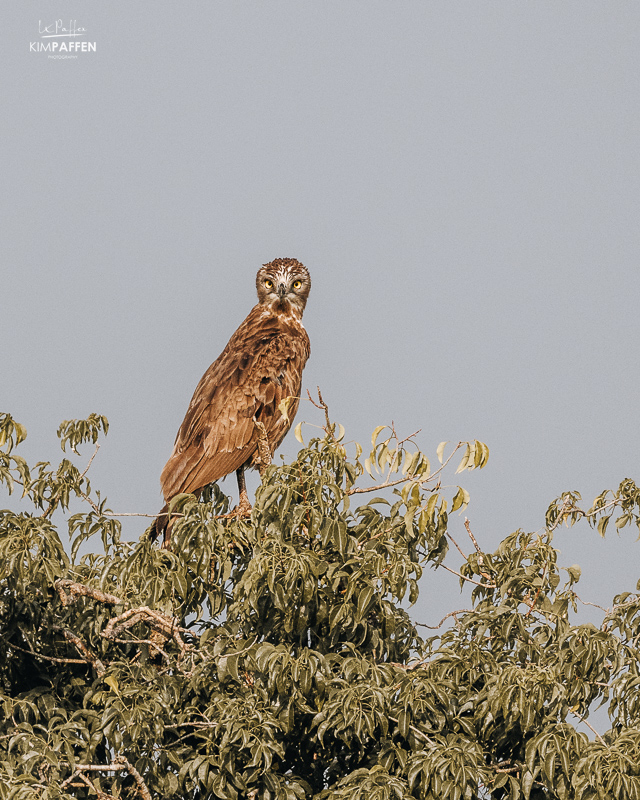
Absolutely. The RF 100-500mm lens provides excellent reach, sharpness, and versatility, making it a top choice for photographing distant wildlife like giraffes, birds, and gorillas.
What accessories are essential for using the Canon R5 on safari?
When using the Canon R5 on safari, consider these essential accessories:
- Extra Batteries: The R5’s battery life can drain quickly, especially when using features like Animal Eye Detection.
- Memory Cards: Bring high-capacity, high-speed CFexpress and SD cards to handle the R5’s large file sizes.
- Lens Hood: Protects the RF 100-500mm lens from dust and glare.
- Rain Cover: Safeguards your gear during unexpected rain or dust storms.
- Tripod or Monopod: Useful for stabilizing shots in low-light conditions or when using the lens at full zoom
How does the Canon R5 compare to the Canon 5D Mark IV for safari photography?
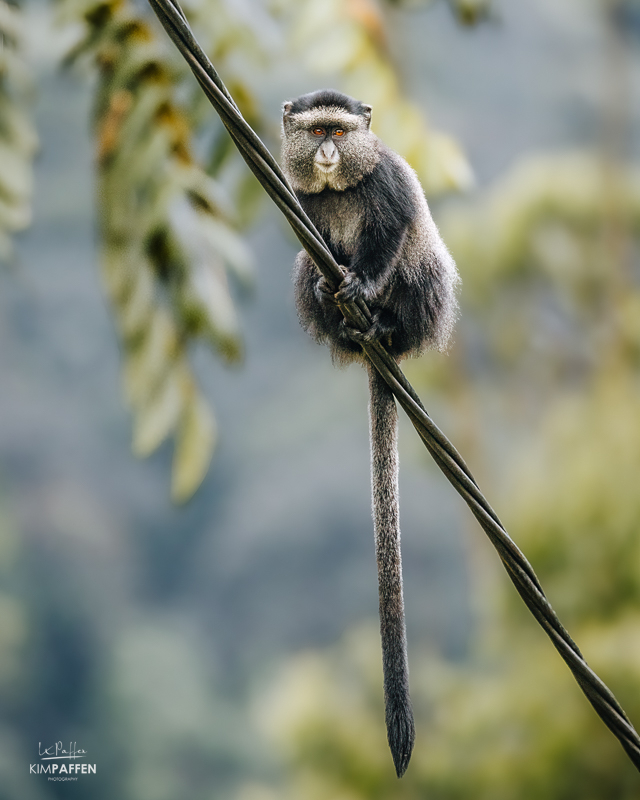
The Canon R5 offers several advantages, including Animal Eye Detection, higher resolution, faster autofocus, and a lighter weight. However, the 5D Mark IV also still performs well, making it a reliable backup in dense jungle environments. Especially when you're still learning to use the R5.
Can the RF 100-500mm lens handle dust and moisture on safari?
Yes, the RF 100-500mm lens is weather-sealed and built to withstand dust and moisture. However, it’s a good idea to carry a lens cleaning kit and use a protective filter.
Conclusion and Curiosity About the New Canon R5

The Canon R5 and RF 100-500mm lens proved to be an exceptional combination for safari photography in Uganda. If you’re looking for the best camera for African wildlife photography, the Canon R5 and RF 100-500mm lens are a winning combination. Whether you’re photographing gorillas, lions, or birds, this setup delivers exceptional results.
From the dense jungles of Bwindi to the vast savannas of Queen Elizabeth National Park, this setup delivered stunning images of gorillas, chimpanzees, and other wildlife. While there was a slight learning curve in low-light conditions, the R5’s advanced features and the lens’s versatility made it my go-to gear for this adventure.
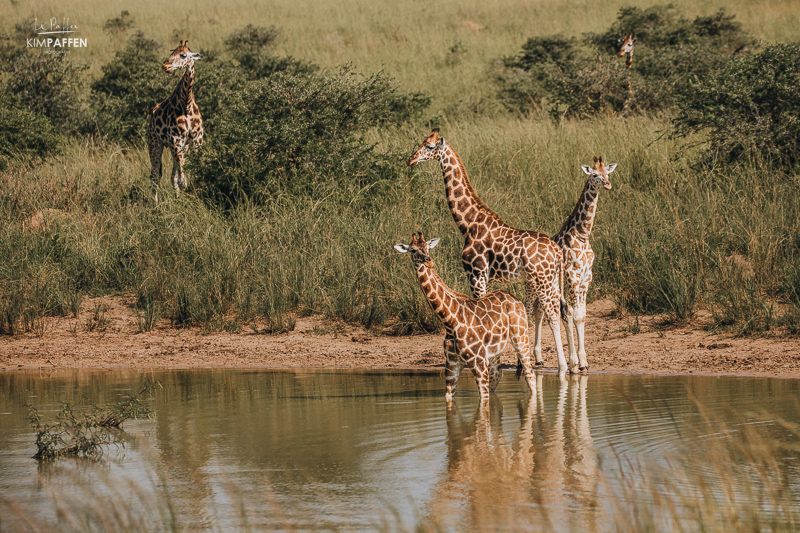
If you’re planning a safari or wildlife photography trip, I highly recommend the Canon R5 and 100-500mm RF lens. This experience has only increased my curiosity about the new Canon R5 MKII. With promises of improved autofocus and even better low-light performance, I wonder if this upgrade will be the ultimate wildlife camera. Have you used this setup before? Share your experiences in the comments below!
Want more safari photography tips? Check out our guide with 21 Safari Photography Tips for Capturing Stunning Safari Photos.

